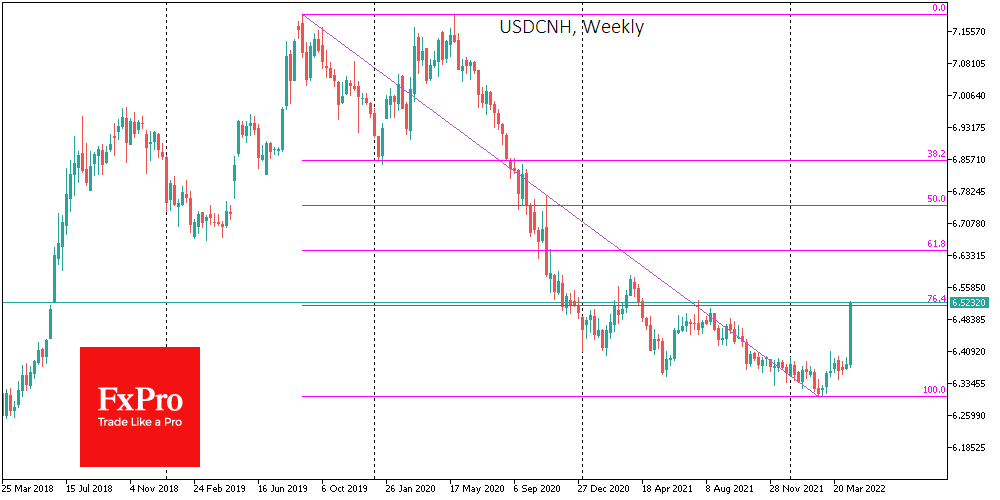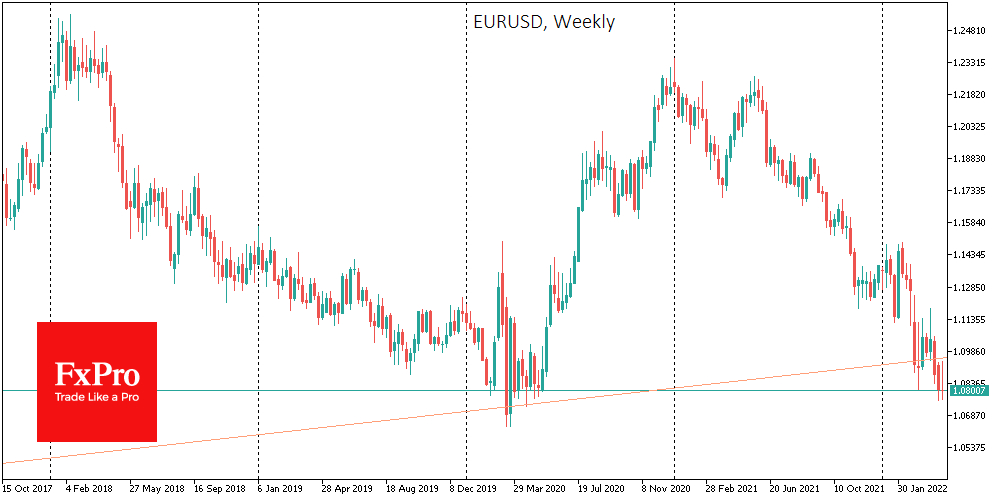The world's major currencies continue to surrender to the dollar one after another. Since the start of March, the yen has lost 11.5% and fallen to a 20-year low. But just as we saw the third largest world economy's currency stabilize, the currency of the second one went on the move.
The dollar has added over 2% to the renminbi since the start of the week, the most significant move since 2015. It is also noteworthy that the USD/CNH had previously successfully resisted the strengthening of the USD since the middle of last year, but in an abrupt move, entered the area of the extremes of the last 12 months.
We see an equally impressive attack on the Pound. The GBP/USD broke the support at 1.3000 on Friday, and it is already losing more than 1% so far today. USD/CHF reached its highest point since June 2020, exceeding 0.9550.
The New Zealand and Australian dollars have been declining steadily since early April, despite hawkish action and comments from respective central banks. Moreover, the export-oriented economies of these countries should benefit from the emerging commodity prices.
The USD/CAD went back to month highs in less than two days, reversing Wednesday's sharp rally and earlier gains from hawkish comments by the Bank of Canada.
EUR/USD is trading below 1.0800, near 2020 reversal levels, and maintaining a very moderate trading range. However, the swing in GBP/USD today and USD/CNH throughout the week and the USD/JPY drama since early March suggests that EUR/USD could be the next victim of the dollar bulls.



